- Home
- Farley Mowat
The Curse of the Viking Grave
The Curse of the Viking Grave Read online
Contents
Title Page
Dedication
1 Schoolroom in the Bush
2 The Chill That Kills
3 Angeline
4 Into Hiding
5 Flight to the North
6 Zabadees
7 Nuelthin-tua
8 Race Against Time
9 The Ihalmiut Camps
10 Innuit Ku
11 Elaitutna
12 The Viking Bow
13 A Change of Plan
14 Koonar’s Grave
15 Interlude
16 Lake-in-Lake
17 Anoeeuk
18 The Deer’s Way
19 The Curse of Flies
20 Of Wolves and Sails
21 The Sea People
22 Joshua Fudge
23 Journey’s End
Also by Farley Mowat
Copyright
For my sons
ROBERT ALEXANDER MOWAT
and
PETER DAVID MOWAT,
with love
CHAPTER 1
Schoolroom in the Bush
ON THE WINDSWEPT ICE OF A LAKE in northern Manitoba two ravens sat hunched beside the frozen carcass of a caribou. Foxes and wolves had left precious little meat on the bones of the dead animal and the ravens circled each other threateningly while the sound of their harsh, disputing voices echoed across the subarctic silence of the lake.
Shambling through the dark woods along the shore, a wolverine raised his heavy head and listened. The cries of the ravens told him there was food nearby, and so he swung purposefully out on the ice in the direction of the birds.
On the north shore of the lake, where a clump of spruce trees stood thick and tall, a white husky sniffed the frigid air. He caught the musky taint of wolverine and his hackles rose. Throwing back his head he howled a challenge down the lake. At once a dozen other huskies sprang to their feet and joined in the wailing chorus.
Nestled snugly amongst the protecting trees near where the dogs were tethered stood a long, low cabin whose two windows stared owlishly out over Macnair Lake. Inside this cabin Angus Macnair put down a book he had been reading aloud and stepped to the nearest window. He watched the dogs intently for a moment or two, then, with a shake of his red, piratical beard, he turned to face three boys who were watching him expectantly.
“Nay, lads. Tisna caribou they dogs is howlin’ after. Wolves maybe…or a wolverine. But dinna fuss yersel’s, they caribou wull soon be comin’ back this way and then we’ll hae fresh meat again.”
He settled himself into a chair, picked up the book and continued with the lesson for the day.
Angus Macnair hardly looked the part of a schoolteacher. He was a massive and craggy-faced trapper who had lived in the Canadian northlands since leaving the Orkney Islands at the age of thirteen. The schoolroom was the Macnair cabin, a cluttered and low-ceilinged log structure redolent with the gamey smell from scores of pelts that hung drying from the rafters. Here Angus taught school for three days each week. During the remainder of the week teacher and students were absent from Macnair Lake, tending their traplines which ran for as much as fifty miles to the north, east, west and south.
As Angus continued reading, his nephew Jamie listened from his perch on a log beside the sheet-iron stove. Jamie’s blue-eyed, sharp-featured face, under a mat of unkempt blond hair, was bent over a wooden stretcher balanced on his knees, as with practiced hand he scraped the flesh side of a fox skin with a blunt knife blade.
Next to him, on the edge of a log bunk, sat Awasin Meewasin, the son of the chief of the Cree Indians who lived at nearby Thanout Lake. Awasin was lean and dark, black-eyed and black-haired, and as taut and wiry as a rabbit snare.
The third “student” was by all odds the most striking member of the trio. His amiable, high-cheekboned face would have seemed Oriental had it not been for his wide blue eyes and the tangle of flaming red hair hanging over his forehead. This was Peetyuk. His father had been a wandering English trapper named Frank Anderson. Many years earlier Anderson had gone far out into the open Barrens to the north of Macnair Lake to spend a winter trapping white fox. Here he had met and married an Eskimo woman. Shortly before the birth of his child, Anderson had gone through the spring ice of a lake and had been drowned, leaving his son Peetyuk to be raised by the Eskimos.
The boys were particularly interested in the book Angus was reading them this day. It was a history of the early Norwegian voyages to America made long before the time of Columbus. The chapter Angus had begun that morning described how, about the year 1360, a Viking expedition sailed to Greenland and then on to North America, perhaps by way of Hudson Bay. Then it told of the finding of a strangely inscribed stone at Kensington, Minnesota, in 1898. This stone bore a message in Runic, the ancient writing of the Nordic peoples.
“When the inscription was translated,” Angus continued, “it proved to be a record left by eight Swedes and twenty Norwegians on an exploring journey to the west. The runes told how the party camped one night on an island in a lake. The next day most of them went fishing, leaving ten men to guard the camp. When the fishermen returned they found their comrades dead and covered with blood. The runes also spoke of an additional ten men who had been left to guard the expedition’s ship at a place on the sea fourteen days’ distance from the scene of the massacre. The date carved on the stone was 1362…”
Angus looked up. “Here’s a picture of yon stane, wi’ all its markin’s,” he told the boys. “Aye, Jamie and they look verra like the markin’s on the wee bit o’ lead Jamie and Awasin found awa out on the Barrens last summer. Fetch it to me, Jamie, and we’ll hae a look.”
Jamie jumped to his feet and from a shelf under the rafters brought down a piece of sheet lead about six inches square. The boys clustered around Angus as the trapper laid the little lead plaque on the page opposite the drawing of the Kensington Stone.
“Nae doot about it! The markin’s are the same sort. I wouldna wonder if the cache where ye found yon bit of lead was made by the self-same lot what carved yon stane. Och! ’Tis too bad we canna read the writin’, laddies.”
Jamie’s eyes shone with excitement. “If the writing is the same, then the other stuff we saw at that cache must be Norse too. I’ll bet it’s worth a fortune!”
“A fortune? Aye. But if they things ye found are truly Norse they’re worth a guid deal mair than money, lad. ’Twould maybe help to write a whole new chapter in the history of America. In any case we’ll surely make a trip out to yon place come summertime—though wi’ considerable more care than you two took.”
Jamie and Awasin had the grace to look shame-faced. They were remembering only too vividly their nearly fatal journey of the previous year when they accompanied a Chipeweyan hunting party on a visit to the Barrenlands and discovered the mysterious cache. Through their own willfulness they became separated from the Indians, lost their canoe and most of their gear on a rapid, and were then forced to spend several months struggling desperately to survive the Barrenlands winter. In the end they escaped with their lives only because they were lucky enough to encounter Peetyuk and the Eskimos.*1
Angus closed the book and put it carefully on a shelf with the score or so of well-worn volumes which formed his treasured library.
“School’s over for the week,” he told the boys. “Awa’ wi’ ye the noo and do yere chores while I cook up a meal.”
When the boys had gone outside Angus stood at the window for a minute and watched them fondly. Peetyuk was busy chopping birch logs into stove lengths while Jamie and Awasin took turns wielding a long ice-chisel to open a water hole in the frozen lake. As Angus watched he pondered on the circumstances which had brought these thre
e to his once lonely cabin.
Jamie had come to him from a southern Canadian city three years earlier when he lost both his parents in an automobile accident, leaving Angus as his only living relative. During those years Jamie had changed from a rather puny boy to a tough and competent youth who was now almost as much at home in the subarctic forests as was Awasin, who had been born there.
The farthest south Awasin had ever been was to the mission school at Pelican Narrows (a mere two hundred miles away), where he had learned to speak and read good English. But Awasin hungered after knowledge, and when Angus Macnair began schooling Jamie, Awasin easily persuaded his father, Alphonse Meewasin, to let him spend the winter months at the Macnair cabin as one of Angus’s students.
Peetyuk came to join the little group at Macnair Lake as a result of his accidental meeting with Jamie and Awasin in the Barrenlands. The Eskimo band to which Peetyuk’s mother belonged brought the two rescued boys south to safety. When the Eskimos returned to their own country they left Peetyuk in Angus Macnair’s care since they believed it was time for the boy to learn something of the world of his dead father, Frank Anderson.
By the time the woodbox and the water pails were full Angus had lunch ready. It consisted of a savory mess of barley boiled up with dried caribou meat and a slab of fat pork. Big chunks of fresh sourdough bread and pint mugs of sweet black tea went with it.
The boys lingered long over the meal, discussing plans for a summer expedition to the Barrens to revisit the strange stone cache. They might have spent the whole of the short winter afternoon talking about the projected trip if Angus had not recalled them to reality.
“Och, laddies! This is no way to make a catch of fur. Awa’ wi’ ye noo! And see to it ye bring hame a fine load o’ pelts. We’ll be wantin’ the money to pay for new canoes and a’ the other gear we’ll be needin’ for yon trip tae Eskimo Land.”
Setting the example himself, Angus pulled on his big parka, his deerskin mittens and his heavy moccasins. When he shouldered his pack and started for the door, the boys were close behind him.
In his hurry to be the first away Jamie sprinted to his cariole (the narrow toboggan which bush trappers favor), where he dumped his pack before springing to the dog-line to unleash his huskies. He had three dogs. Two were small, rangy beasts which had belonged to his uncle. The third was a huge white husky called Fang—one of two lost Eskimo dogs Awasin and Jamie had found out on the Barrens.
The yard now became a pandemonium of shouting boys and howling dogs. Peetyuk was the first to get his team harnessed, and with a derisive shout of farewell he jumped on the tail end of his long Eskimo sled and went careening off to the southward over the lake ice. Jamie and Awasin got away a few moments later. For a while their teams ran neck and neck, each straining to draw ahead of the other. But when Jamie began shouting “Chaw! Chaw!” his team obediently turned left, swinging toward the eastern side of the lake.
Angus was still methodically hitching up his dogs as the two carioles and the sled raced away from the cabin. He shook his head as he watched the wild progress of the three boys, but he was smiling.
“Juliet, lass,” he said as he tightened his lead dog’s belly strap, “they’re a’ three of them as daft as badgers.”
Juliet whined in reply, then thrust her shoulders against the traces, giving the signal to the other dogs to take a strain. Sedately she led the team out onto the ice and Angus’s cariole turned away on the long northern trail.
The chill silence of a January afternoon settled down over the cabin as a last fugitive wisp of blue smoke curled upward through the old black chimney pipe.
CHAPTER 2
The Chill That Kills
ONLY THE HARSH CHATTERING OF Canada jays scavenging in the refuse pile broke the silence at the cabin during the next four days while Angus and the boys were away on their traplines. Not until early afternoon of the fourth day did smoke begin to rise again in a blue haze from the chimney. Awasin’s cariole stood upended in freshly fallen snow beside the cabin door while his dogs, weary after a final run of thirty miles through the soft snow in the forests, lolled panting in front of their little log hutches. Awasin had driven them hard in order to be first home. But he barely had the kettle boiling when Jamie’s team came dashing up the gentle slope from the lake shore.
“What kept you so long?” Awasin asked insultingly.
Jamie made no reply. Whistling to himself he tied his leader to a tree, then he picked up a big, dark object from his cariole. He walked up to the cabin and casually dropped it at Awasin’s feet.
The Indian boy crouched down to stare incredulously. “A fisher!” he cried admiringly as he stroked the beautiful dark fur. “Only once before have I seen such a one. Where did you catch it, Jamie?”
“In a marten trap in the spruce woods beyond my second overnight cabin,” Jamie replied. “Probably lots more of them around, only it takes a real trapper to get them.”
Awasin was too impressed to rise to the bait. The fisher is one of the rarest and most valuable of all woodland mammals. Awasin carried it reverently into the cabin and laid it on the table where he could examine it in detail from its sharp, weasel face to the magnificent bushy tail.
He was interrupted by the renewed howling of dogs. This time they were announcing Peetyuk’s arrival. Just at dusk Angus Macnair also reached home.
It had been a good trip all around. Peetyuk had two foxes, a marten, three ermine weasels and a mink. Awasin had two mink and two red foxes. Angus, whose trapline was the longest of all, had three foxes, two mink, a weasel and an otter. Jamie had caught only one red fox in addition to the fisher, but the fisher alone was worth nearly the total catch of the other trappers.
After supper kerosene lanterns were lit and everyone got down to work. As they skinned, cleaned and stretched the pelts they discussed their small adventures. Awasin told of putting his leg through a thin spot in the ice while setting an otter trap, and of having to light a fire and dry his moccasin before his foot froze solid. Jamie reported that a wolverine had broken into one of his overnight cabins and had eaten all his grub so that he had to make do with ptarmigan which he shot with his .22 rifle. Peetyuk had encountered two Chipeweyan Indians bound south for the trading post at Reindeer Lake from the Chipeweyan winter camps at timber line on Kasmere Lake. But it was Angus’s news that roused the most interest. At the extreme north end of his line he had seen fresh signs of deer.
Following the pattern of their annual migration, the caribou had come south out of the Barrens early in the autumn, seeking shelter in the forests. But the main herds had swept past Macnair Lake in a matter of a week, then had swung westward and disappeared. From what Angus was reporting now, it appeared that they had circled north and east and were drifting south once more. The return of the deer was a prospect which excited everyone, since apart from rabbits and ptarmigan there had been no fresh meat at Macnair Lake for three long months.
When talk of the caribou died down Angus returned to Peetyuk’s meeting with the Chipeweyans—the Idthen Eldeli, or Deer Eaters, as they called themselves.
“’Tis a strange time o’ the year for they fellows to be traveling south,” he mused. “Did they no say why they were awa’, Peetyuk?”
Peetyuk shook his head. “I not able speak their tongue. But they look hungry, and they go in big hurry. They carry no furs on sleds, and dogs look starved.”
“They’re a strange lot, they Chips,” Angus mused. “They try to live as their ancestors did a century ago, but that canna be done nae mair. Last year they nigh starved to death and maybe they have more trouble the noo. Ah weel, Alphonse Meewasin will ken. I stopped by to see him at Thanout Lake the day, but he was awa’ on his trapline. Your mither says he’ll be doon for a visit soon, Awasin, to see how your schoolin’ goes, nae doot.”
Alphonse Meewasin came sooner than expected. At lunchtime the next day the dogs announced the arrival of a visitor, and a few minutes later the tall, gaunt form of the Cree chief
stood in the doorway. Under his arm was a small parcel done up in deer hide, and with a barely suppressed smile on his lips he held out the parcel to Peetyuk.
“It must be that my daughter Angeline does not think the Ayuskeemo*2 can make good boots,” he explained. “And so she sends you these…”
The parcel contained two pairs of beautifully worked moosehide moccasins, elaborately decorated with red, green and gold beadwork. Peetyuk stood holding them in his hands, much embarrassed, and uncertain what to do or say.
“Now you’re in trouble, Pete!” Jamie cried joyfully. “When a Cree girl makes moccasins for a fellow…that’s the end of him. Isn’t that right, Awasin?”
Awasin nodded his head solemnly. “That is so. And my sister has never made moccasins for any man before. I must watch you close, Peetyuk. I am her brother, do not forget!”
Peetyuk, his face almost as red as his hair, turned in dismay to Awasin, who stared sternly back at him. “But I do nothing,” he cried. “Not speak her at all, even.”
Peetyuk’s torment was cut short by Alphonse, who turned to address Angus. “Yesterday morning I passed close to the Idthen Eldeli camp at Kasmere Lake and the women were wailing the death songs. Before I could go to the tents I was stopped by the old chief, Denikazi. He said there was a great sickness in the camp, and already some had died. All were sick except himself and some old people and the hunters Penyatzi and Madees, and these two he had sent south to seek aid from the white men.”
Angus’s face clouded.
“ ’Tis bad news you bring, Alphonse. Do ye ken what ails them?”
“Only that it is a lung sickness. It brings the burning fevers and then the chill that kills.”
“Then there’s little doot about it,” Angus muttered half to himself. “ ’Tis influenza, certain sure. They would have brought it back wi’ them from the Christmas visit to the mission.” He looked up and asked sharply. “How are your ane people, Alphonse? Any sickness amongst them?”

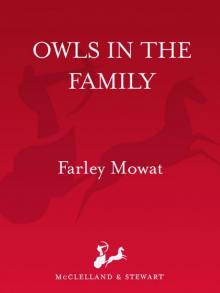 Owls in the Family
Owls in the Family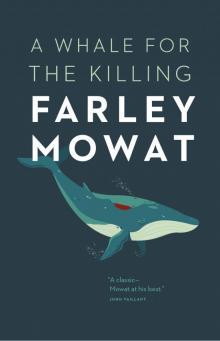 A Whale for the Killing
A Whale for the Killing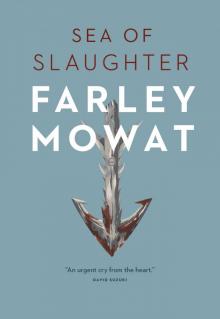 Sea of Slaughter
Sea of Slaughter The Curse of the Viking Grave
The Curse of the Viking Grave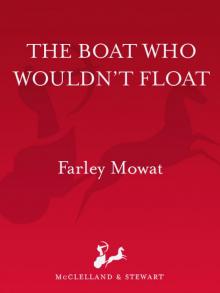 The Boat Who Wouldn't Float
The Boat Who Wouldn't Float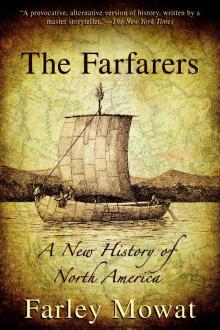 The Farfarers: Before the Norse
The Farfarers: Before the Norse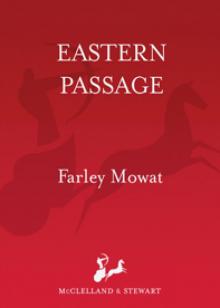 Memoir
Memoir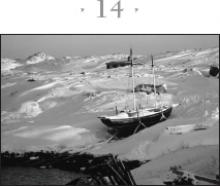 Bay of Spirits: A Love Story
Bay of Spirits: A Love Story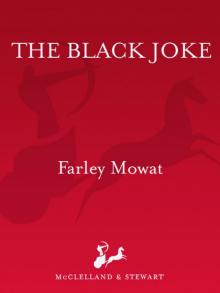 The Black Joke
The Black Joke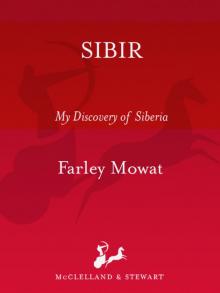 Sibir: My Discovery of Siberia
Sibir: My Discovery of Siberia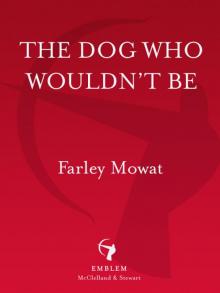 The Dog Who Wouldn't Be
The Dog Who Wouldn't Be Never Cry Wolf
Never Cry Wolf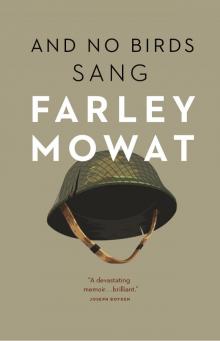 And No Birds Sang
And No Birds Sang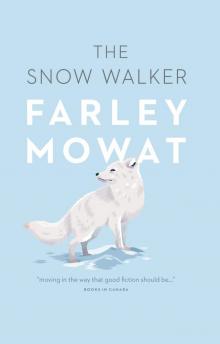 The Snow Walker
The Snow Walker Born Naked: The Early Adventures of the Author of Never Cry Wolf
Born Naked: The Early Adventures of the Author of Never Cry Wolf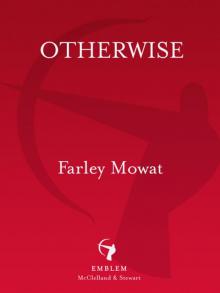 Otherwise
Otherwise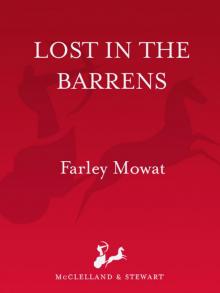 Lost in the Barrens
Lost in the Barrens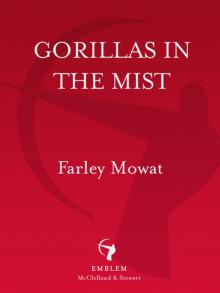 Gorillas in the Mist
Gorillas in the Mist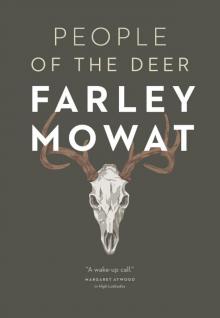 People of the Deer
People of the Deer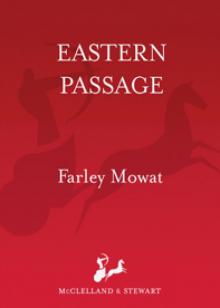 Eastern Passage
Eastern Passage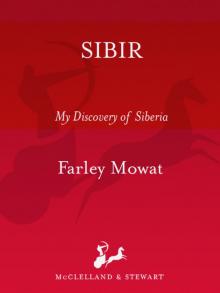 Sibir
Sibir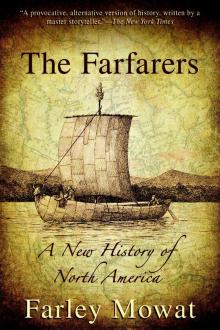 The Farfarers
The Farfarers A Whale For The Killing (v5.0)
A Whale For The Killing (v5.0)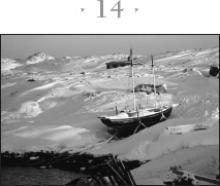 Bay of Spirits
Bay of Spirits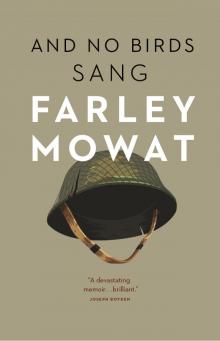 And No Birds Sang (v5.0)
And No Birds Sang (v5.0)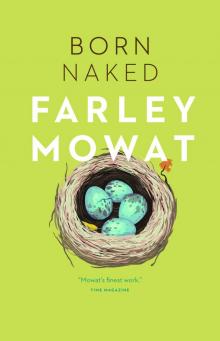 Born Naked
Born Naked